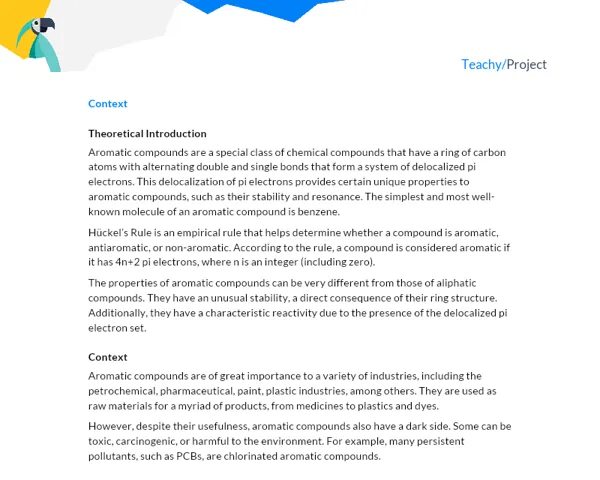Contextualization
Theoretical Introduction
Colligative properties are physical characteristics that depend exclusively on the number of solute particles present in a solution, and not on the nature of these particles. These properties include freezing point depression, boiling point elevation, osmotic pressure, and vapor pressure reduction.
Freezing point depression, also known as cryoscopic depression, is a colligative property that indicates that the addition of a non-volatile solute to a solvent causes a decrease in its freezing temperature. A common example of this is the use of salt on snow or ice to lower the melting point temperature, making it easier to remove these materials.
Boiling point elevation, caused by the addition of a solute to a solvent, results in an increase in the temperature at which the solvent transitions from liquid to gas. A practical example of this concept is cooking food at high altitudes, where water boils at lower temperatures, requiring adjustments in cooking time and temperature.
Importance of the Theme
Understanding colligative properties is important in a variety of practical and scientific applications. They are essential in the study and understanding of solutions, allowing scientists to explore the physical properties of substances in more detail.
Furthermore, colligative properties are used in many industries and in our daily lives. In the food industry, for example, sugar is often added to ice cream to lower the freezing point of water, influencing the texture of the final product. In colder climates, salt is used to melt ice on roads and sidewalks to reduce the likelihood of slip accidents.
Practical Activity
Activity Title: "Boiling with Salt - Understanding Boiling Point Elevation and Melting with Sugar - Understanding Freezing Point Depression"
Project Objective: Practical understanding of colligative properties, specifically boiling point elevation and freezing point depression.
Detailed Project Description:
Students will be organized into groups of 3 to 5 people. Each group will be tasked with conducting two practical experiments to demonstrate colligative properties, namely boiling point elevation and freezing point depression. Groups will need to solve problems, perform calculations, and confirm results through experiments. Thus, the project will require a theoretical and practical understanding of colligative properties. The project will last for one month, during which groups will work collaboratively to complete it.
Required Materials:
- Stainless steel pots
- Water
- Digital cooking thermometer
- Salt (NaCl)
- Sugar
- Ice
- Transparent glass cups
- Stopwatch
- Digital kitchen scale
- Paper, pencil, and calculator for calculations and notes
Detailed Step-by-Step:
-
Boiling Point Elevation: In a pot, add a specific amount of water (e.g., 500 ml). Record the water temperature as it heats up to boiling and note the boiling temperature. Repeat the experiment, this time adding a measured amount of salt to the water (e.g., 10 grams) and note the boiling temperature. Compare the boiling temperatures of the two experiments and discuss the results.
-
Freezing Point Depression: Place a specific volume of water (e.g., 500 ml) in a glass cup and put it in the freezer. Monitor and record the time it takes for the water to freeze. Repeat the experiment, this time adding a measured amount of sugar to the water (e.g., 10 grams), and note the time it takes to freeze. Compare the freezing times of the two experiments and discuss the results.
-
Final Report: After completing the experiments, each group should prepare a detailed report documenting their results and reflections. The report should include the following topics:
- Introduction: Presentation of the theme, project objective, importance of colligative properties, and activity contextualization.
- Development: Theoretical explanation of colligative properties, details on experiment execution, presentation, and discussion of results.
- Conclusion: Recap of key arguments, lessons learned, and conclusions about the project.
- Bibliography: References to sources consulted for project development.
Students should use the experiments conducted to contextualize the theory, present the results, and discuss the impact of these phenomena on daily life.

